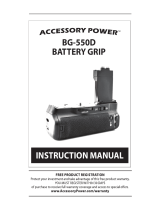
2
1
2
3
4
Introduction
Contents at
a Glance
Downloading
Images
Camera
Settings
Remote
Shooting
Reference
Preferences
Index
Introduction
EOS Utility (hereinafter EU) is software for communication with your EOS
camera. By connecting the camera and computer with the cable provided
with the camera, you can download to your computer images saved in
the camera’s memory card as well as set various camera settings or
shoot remotely from EU on your computer.
Main Features of EU
From EU, you can control the camera remotely and perform the
following main features.
O Batch download to your computer images
saved in the camera’s memory card.
O You can also download to your computer only images you have
selected.
O Set various camera settings from your
computer.
O Shoot remotely by controlling the camera
from your computer.
O Remote Live View shooting – Shoot while checking your subject in
real time on your computer.
O You can also shoot remotely by operating the camera’s shutter
button.
O Preset a time allowing the camera to shoot automatically with
timer shooting.
O
When downloading images or shooting
remotely, view/check images with the linked
Digital Photo Professional immediately.
System Requirements
*
1
Compatible with 32-bit/64-bit systems for all versions except Starter Edition
*
2
.NET Framework is Microsoft software. It is installed together with EU.
*
3
For Windows 8.1, Windows 8 or Windows 7 64-bit systems, minimum 2GB
Check the Canon website for the latest system requirements, including
supported OS versions.
Supported Camera
Can be used for RAW images, JPEG images, MOV movies or MP4
movies shot with the cameras below.
OS
Windows 8.1, Windows 8, Windows 7
*
1
Computer
PC with one of the above OS preinstalled and a USB port
as a standard feature (Upgraded machines not supported)
* .NET Framework 3.0 or later is required.*
2
CPU 1.3GHz Pentium or higher
RAM Minimum 1GB*
3
Display
Screen resolution: 1024 × 768 pixels or more
Color quality: Medium (16 bit) or more
EOS-1D X EOS-1D C EOS-1D Mark IV
EOS-1Ds Mark III EOS-1D Mark III EOS 5D Mark III
EOS 5D Mark II EOS 6D EOS 7D Mark II
EOS 7D EOS 70D EOS 60D
EOS 50D EOS 40D EOS 700D
EOS 100D EOS 650D EOS 600D
EOS 550D EOS 500D EOS 450D
EOS 1200D EOS 1100D EOS 1000D
EOS M2 EOS M
–




















